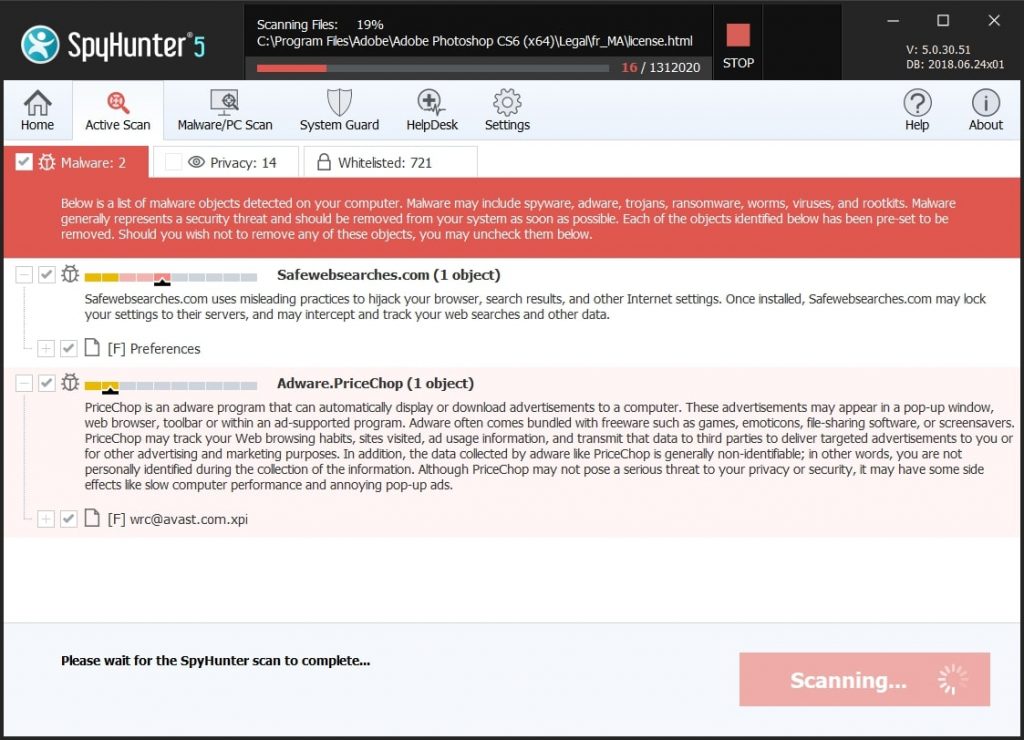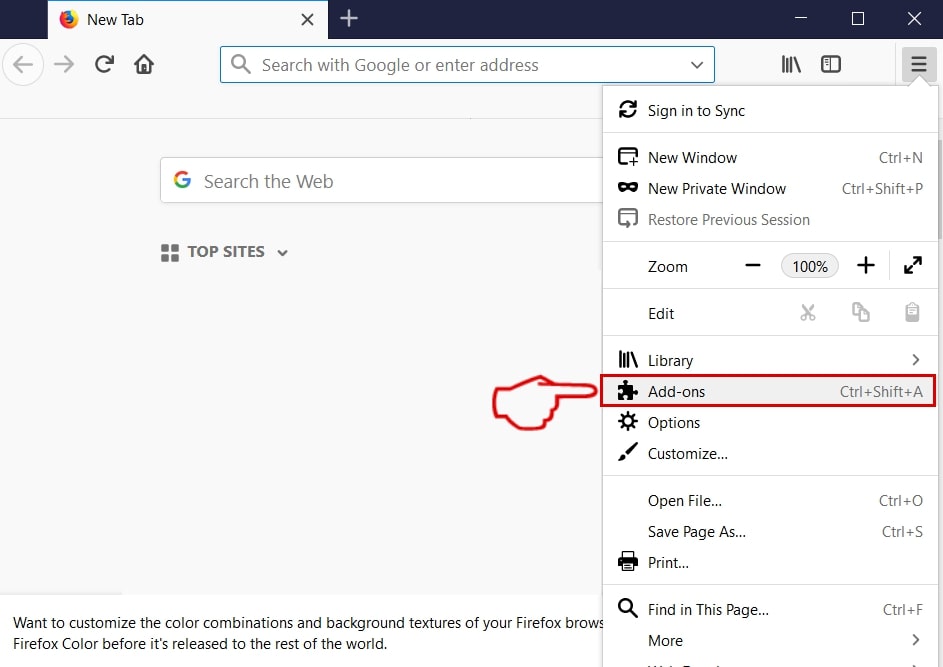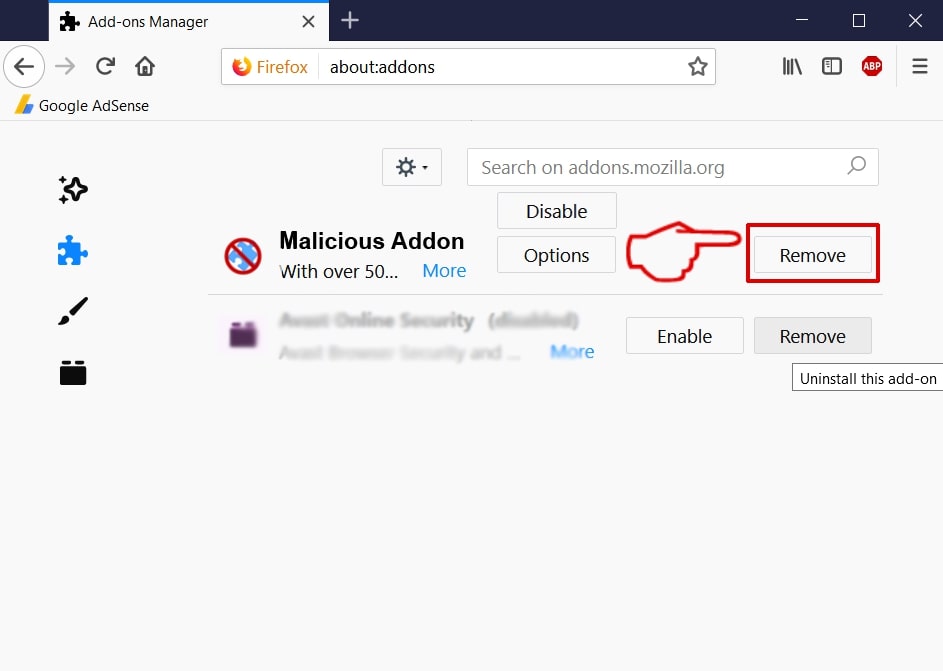This short article has been developed in order to describe what is the Exploit.GetShell data and also how to get rid of the Exploit.GetShell Trojan from your Mac.
A Trojan, acting to be a setup of a program has actually been just recently identified by malware researchers to infect computers and afterward exchange information from the infected computer system to the computer of the hackers. The sent information is encoded so researchers are not exactly sure what information is transferred, however, one thing is without a doubt– the details are likely vital for the victim, such as passwords, keystrokes, and also monetary information. If you have actually seen the Exploit.GetShell fake installer files, it is highly advised to remove this Trojan horse from your computer system as well as to secure your Mac, preferably by using the information in this article.

Threat Summary
| Name | Exploit.GetShell |
| Type | Remote Access Trojan (RAT) on Mac |
| Short Description | Aims to slither in your PC undetected and then begin to download various malicious files and steal data. |
| Symptoms | Your Mac may start to behave in a weird manner. You may notice new and strange files or processes running in the background. |
| Distribution Method | Via malicious e-email attachments, fake setups, web links or other objects. |
| Detection Tool |
See If Your System Has Been Affected by malware
Download
Malware Removal Tool
|
User Experience | Join Our Forum to Discuss Exploit.GetShell. |
Exploit.GetShell – Description
In order to infect victims, the Exploit.GetShell Trojan may claim to be a genuine type of program, whose installer is uploaded online. Such programs may act to be something related to:
- Network optimizers.
- System optimizers.
- Some type of repair software program to accelerate your Mac performance.
- A driver installer.
The Exploit.GetShell Trojan may not also have anything that may point to files, given that your computer might also end up being infected as a result of one more virus that might enter it and also download and install the Exploit.GetShell files without you even realizing this had happened.
Along with this, malware researchers report Exploit.GetShell to be mounted on your computer as a result of an update definition that may have gone along with the setup of some other cost-free program you possibly downloaded and installed from a low-reputation software program providing website.
Once the Exploit.GetShell Trojan has actually been added on your computer system, it quickly begins its malicious task by possibly including various different kinds of Mac modifications which make it assume permissions. The GetShell Trojan may automatically run on MacOS Boot.
In addition to this, the GetShell virus may likewise target various other Mac registry sub-keys, the usage of which might lead to the malware running instantly when you boot your device.
When the Exploit.GetShell malware has actually ran on your Mac it might start to execute it’s destructive tasks. It most often might consist of the malware having the ability to obtain various information from your computer system, such as:
- Your browsing background.
- Passwords you have saved.
- Your clicks.
- Any type of keystrokes you may have entered.
- Information about your important files.
Based upon that information, the Trojan may do a selection of malicious activities, which can result into a problem for you:
- Steal your passwords.
- Steal crucial files as well as login names.
- Take screenshots of your Desktop.
- Enable your camera.
- It may reduce your Mac performance by showing different advertisements and also triggering browser redirects.
- Download and install all kinds of harmful files on your Mac.
Along with these tasks, the Exploit.GetShell Trojan might additionally have the capacity to install various other malware on your MacOS system or develop copies of itself. This may lead to the malware being significantly more difficult to be eliminated by yourself. Nevertheless, since the infection is a grave threat to your Mac and the info in it, we suggest you to remove it right away without any hesitation.
Get Rid OfExploit.GetShell Trojan from Your Computer
In order to ensure and eliminate the Exploit.GetShell Trojan completely from your computer system, we advise that you follow the removal instructions that are beneath this article. They have been specifically created in order to help you in removing Exploit.GetShell Trojan either by yourself or automatically. If the manual removal does not address your concerns with Exploit.GetShell, we recommend that you remove this danger immediately by downloading and install an innovative anti-malware software. Such will effectively ensure that Trojans, like Exploit.GetShell are gotten rid of from your Mac and it remains shielded against Trojans as well as other malware in the future also.
Steps to Prepare Before Removal:
Before starting to follow the steps below, be advised that you should first do the following preparations:
- Backup your files in case the worst happens.
- Make sure to have a device with these instructions on standy.
- Arm yourself with patience.
- 1. Scan for Mac Malware
- 2. Uninstall Risky Apps
- 3. Clean Your Browsers
Step 1: Scan for and remove Exploit.GetShell files from your Mac
When you are facing problems on your Mac as a result of unwanted scripts and programs such as Exploit.GetShell, the recommended way of eliminating the threat is by using an anti-malware program. SpyHunter for Mac offers advanced security features along with other modules that will improve your Mac’s security and protect it in the future.

Quick and Easy Mac Malware Video Removal Guide
Bonus Step: How to Make Your Mac Run Faster?
Mac machines maintain probably the fastest operating system out there. Still, Macs do become slow and sluggish sometimes. The video guide below examines all of the possible problems that may lead to your Mac being slower than usual as well as all of the steps that can help you to speed up your Mac.
Step 2: Uninstall Exploit.GetShell and remove related files and objects
1. Hit the ⇧+⌘+U keys to open Utilities. Another way is to click on “Go” and then click “Utilities”, like the image below shows:

2. Find Activity Monitor and double-click it:

3. In the Activity Monitor look for any suspicious processes, belonging or related to Exploit.GetShell:


4. Click on the "Go" button again, but this time select Applications. Another way is with the ⇧+⌘+A buttons.
5. In the Applications menu, look for any suspicious app or an app with a name, similar or identical to Exploit.GetShell. If you find it, right-click on the app and select “Move to Trash”.

6. Select Accounts, after which click on the Login Items preference. Your Mac will then show you a list of items that start automatically when you log in. Look for any suspicious apps identical or similar to Exploit.GetShell. Check the app you want to stop from running automatically and then select on the Minus (“-“) icon to hide it.
7. Remove any leftover files that might be related to this threat manually by following the sub-steps below:
- Go to Finder.
- In the search bar type the name of the app that you want to remove.
- Above the search bar change the two drop down menus to “System Files” and “Are Included” so that you can see all of the files associated with the application you want to remove. Bear in mind that some of the files may not be related to the app so be very careful which files you delete.
- If all of the files are related, hold the ⌘+A buttons to select them and then drive them to “Trash”.
In case you cannot remove Exploit.GetShell via Step 1 above:
In case you cannot find the virus files and objects in your Applications or other places we have shown above, you can manually look for them in the Libraries of your Mac. But before doing this, please read the disclaimer below:
1. Click on "Go" and Then "Go to Folder" as shown underneath:

2. Type in "/Library/LauchAgents/" and click Ok:

3. Delete all of the virus files that have similar or the same name as Exploit.GetShell. If you believe there is no such file, do not delete anything.

You can repeat the same procedure with the following other Library directories:
→ ~/Library/LaunchAgents
/Library/LaunchDaemons
Tip: ~ is there on purpose, because it leads to more LaunchAgents.
Step 3: Remove Exploit.GetShell – related extensions from Safari / Chrome / Firefox









Exploit.GetShell-FAQ
What is Exploit.GetShell on your Mac?
The Exploit.GetShell threat is probably a potentially unwanted app. There is also a chance it could be related to Mac malware. If so, such apps tend to slow your Mac down significantly and display advertisements. They could also use cookies and other trackers to obtain browsing information from the installed web browsers on your Mac.
Can Macs Get Viruses?
Yes. As much as any other device, Apple computers do get malware. Apple devices may not be a frequent target by malware authors, but rest assured that almost all of the Apple devices can become infected with a threat.
What Types of Mac Threats Are There?
According to most malware researchers and cyber-security experts, the types of threats that can currently infect your Mac can be rogue antivirus programs, adware or hijackers (PUPs), Trojan horses, ransomware and crypto-miner malware.
What To Do If I Have a Mac Virus, Like Exploit.GetShell?
Do not panic! You can easily get rid of most Mac threats by firstly isolating them and then removing them. One recommended way to do that is by using a reputable malware removal software that can take care of the removal automatically for you.
There are many Mac anti-malware apps out there that you can choose from. SpyHunter for Mac is one of the reccomended Mac anti-malware apps, that can scan for free and detect any viruses. This saves time for manual removal that you would otherwise have to do.
How to Secure My Data from Exploit.GetShell?
With few simple actions. First and foremost, it is imperative that you follow these steps:
Step 1: Find a safe computer and connect it to another network, not the one that your Mac was infected in.
Step 2: Change all of your passwords, starting from your e-mail passwords.
Step 3: Enable two-factor authentication for protection of your important accounts.
Step 4: Call your bank to change your credit card details (secret code, etc.) if you have saved your credit card for online shopping or have done online activiites with your card.
Step 5: Make sure to call your ISP (Internet provider or carrier) and ask them to change your IP address.
Step 6: Change your Wi-Fi password.
Step 7: (Optional): Make sure to scan all of the devices connected to your network for viruses and repeat these steps for them if they are affected.
Step 8: Install anti-malware software with real-time protection on every device you have.
Step 9: Try not to download software from sites you know nothing about and stay away from low-reputation websites in general.
If you follow these reccomendations, your network and Apple devices will become significantly more safe against any threats or information invasive software and be virus free and protected in the future too.
More tips you can find on our MacOS Virus section, where you can also ask any questions and comment about your Mac problems.
About the Exploit.GetShell Research
The content we publish on SensorsTechForum.com, this Exploit.GetShell how-to removal guide included, is the outcome of extensive research, hard work and our team’s devotion to help you remove the specific macOS issue.
How did we conduct the research on Exploit.GetShell?
Please note that our research is based on an independent investigation. We are in contact with independent security researchers, thanks to which we receive daily updates on the latest malware definitions, including the various types of Mac threats, especially adware and potentially unwanted apps (PUAs).
Furthermore, the research behind the Exploit.GetShell threat is backed with VirusTotal.
To better understand the threat posed by Mac malware, please refer to the following articles which provide knowledgeable details.



